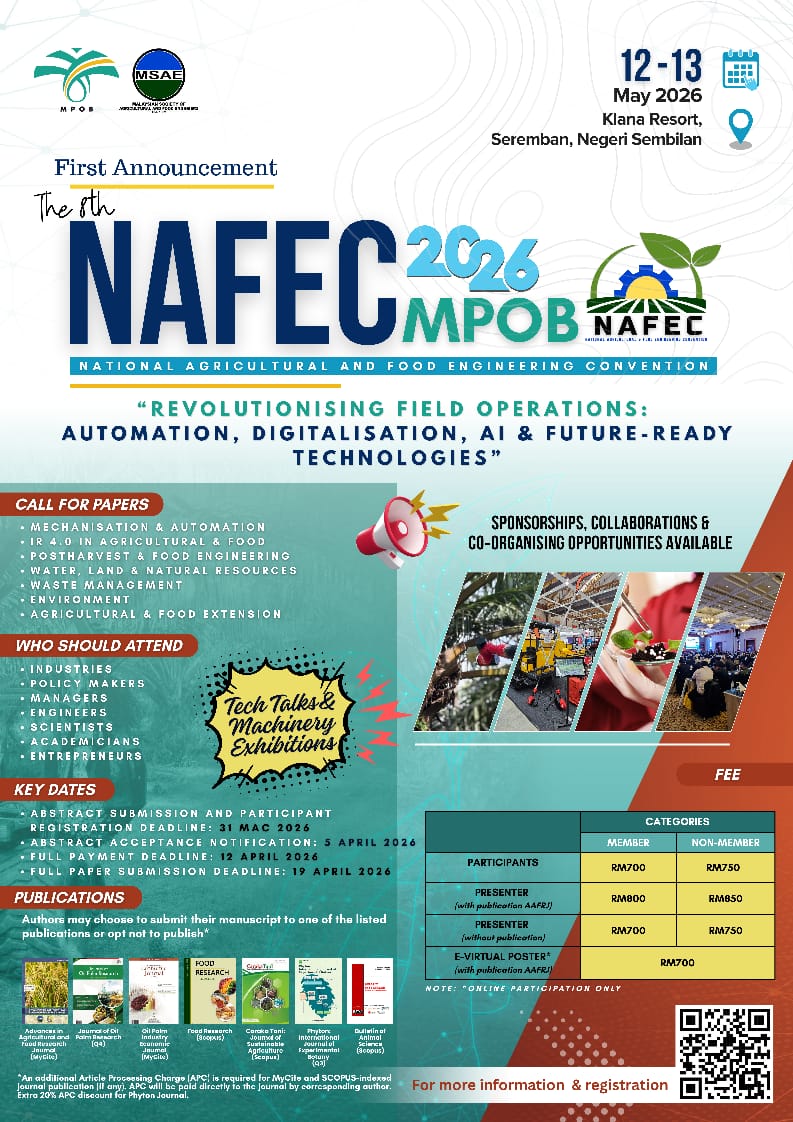Performance Comparison of Trunk Injection Mechanisms for Ganoderma Control
DOI:
https://doi.org/10.36877/aafrj.a0000412Abstract
A severe disease known as Ganoderma Boninense, which attacks a group of wood-decaying fungi, causes Basal Stem Rot (BSR) in oil palm trees. One of the treatments introduced to control the spread is injecting a chemical into the palm's trunk. After receiving a hexaconazole treatment for a year, a study on 2008 Ganoderma-infected palm trees in an estate revealed that 95.6% of the infected palms were still standing. The injection process facilitates several devices that were used and invented. These machines utilise a pressure-injection technique that injects a chemical through a flexible hose into a healthy palm's tissue to prevent the disease from spreading. Hence, the development of effective trunk injector mechanisms for Ganoderma treatment is discussed in this article. The first injection method utilised the Pressure Injection Apparatus (PIA), which can deliver a chemical to the target sites to control BSR. Second, a Mechanical Trunk Injector mainly facilitated chemical injection into the palm trunk using a prime mover. Next, the Tractor Mounted Trunk Injector, comprised of an injection apparatus system, was found to perform effectively and efficiently. The distribution profile of the dye eosin in the stem revealed that it covered more than 80% of the cross-sectional and longitudinal axes of the palm tree's trunk. Instead of the previous injection apparatus control method, this machine could speed up the injection time. Compared to the 20-minute-per-hole completion time of the PIA, the machine only took 3 to 5 minutes to complete an injection, which was 65% faster, and about 100 to 120 palms could be covered in a day. Labour requirements were very minimal as it is a single-operated machine. Utilising the machine would also result in a reduction in the number of workers needed.
Downloads
Published
How to Cite
Issue
Section
License
Copyright (c) 2023 Mohd Ikmal Hafizi Azaman, Mohd Ramdhan Mohd Khalid, Mohd Khairul Fadzly Md Radzi, Mohd Azwan Mohd Bakri

This work is licensed under a Creative Commons Attribution-NonCommercial 4.0 International License.
Author(s) shall retain the copyright of their work and grant the Journal/Publisher right for the first publication with the work simultaneously licensed under:
Creative Commons Attribution-NonCommercial 4.0 International (CC BY-NC 4.0). This license allows for the copying, distribution and transmission of the work, provided the correct attribution of the original creator is stated. Adaptation and remixing are also permitted.

This broad license intends to facilitate free access to, as well as the unrestricted reuse of, original works of all types for non-commercial purposes.
The author(s) permits HH Publisher to publish this article that has not been submitted elsewhere.

.png)

.jpg)



